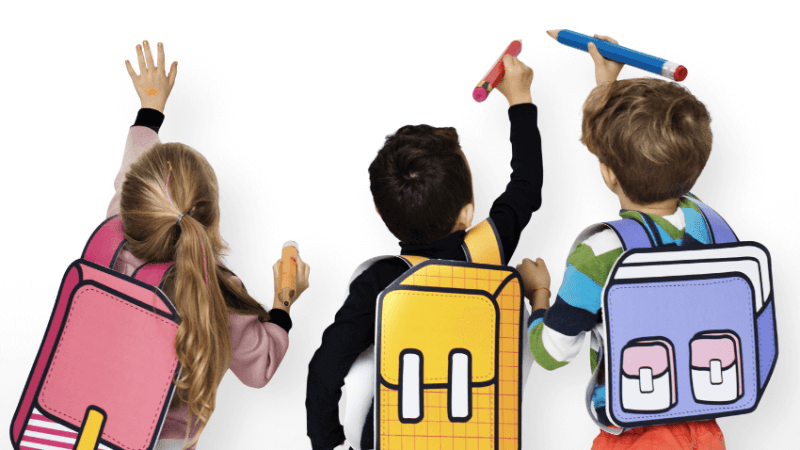Map skills – free geography tools, and how to get the best out of them

What’s your favourite journey? Delve into spatial representations and diverse points of view, and gain essential map skills for free…

- by Anthony Barlow
- University lecturer, author and trustee of the Geographical Association
Using maps is at the core of the geography curriculum in both KS1 and KS2. Sometimes you’ll be using paper maps in the field, scrutinising keys and legends, to give pupils a real sense of space.
Other times you might be plotting detailed routes and looking very closely at a few individual houses, or using apps such Digimaps for Schools to take an historical view.
However, the go-to for all teachers is likely to be the trio of Google products accessible from any browser: Maps, StreetView, and Earth.
Of these three, we’re likely most familiar with Maps – it’s what we pull up on our phones whenever we’re lost.
But it’s Google Earth that I think has the greater potential for helping us to meet the following Ofsted requirements:
- decoding information from maps
- constructing (or encoding) maps
- analysing distributions and relationships
- route-finding
- interpreting information to draw conclusions
So, how can we use this suite of free tools to enhance geography lessons? I have some suggestions…
Primary map skills
Ofsted says that one of the key skills when using maps is for children to ‘learn to interpret spatial representations, particularly maps, globes and atlases, and construct their own maps and plans’ (2021).
Crucially, they should also be able to compare and contrast how different media, or ‘spatial representations’ depict a particular location.
For example, if we look at a photo, a video and a map of London, each will present an image of how the city is laid out (topography), what it looks like (character), how it is navigated (transport nodes), and what it might be like if you were actually there.
I say might be as this is incredibly important; everything we see is subjective and partial.
We only have an outsider’s view unless we can go to the place we’re studying, talk to the people who live there, and assemble a comprehensive ‘sense of place’ from various sources.
This outsider’s perspective can often be found at the root of poor geography teaching.
For example, for many pupils, it can be difficult to ascertain what is an ordinary street, housing estate, or high-street or park, as opposed to the tourism centres, royal palaces and parks that we might see at first glance when researching a new location.
This is where Google Maps, StreetView and Earth really come into their own, allowing us to explore the spectacular alongside the mundane, all from a number of different perspectives.
Even when teaching very young children, we need to avoid giving them only a partial view or a ‘single story’ when they’re introduced to a new location.
We can investigate diversity in viewpoints within the classroom by asking the children simple questions about localities and settlements, and sharing and exploring their answers.
For instance, ask pupils: What is your favourite place? Why? What’s your favourite journey? Show me on a map.
Point out how interesting it is when we have different answers to these questions, and how we might even take different routes to the same place.
You can consider how viewpoints may change between pedestrians and cyclists, for example.
Each will see the world differently, even if they’re in the same place, physically.
Google Earth is a great place to start when figuring out what your local area looks like.
Try exploring the routes and places your pupils talk about as part of the questions above, and link what you see back to your discussions on diversity and points of view.
See the pointers below for getting the most out of this exercise.
Google Earth activities
There are four main parts of this tool. They are:
- Voyager – this connects you to ready-made collections of locations (such as great places to hike, coastal cities, etc.)
- Square tool – picks a random spot on the map for you to explore
- Pin tool – mark places on the globe and make a project yourself. (E.g. parks within walking distance of your school, or the most popular cycling routes.)
- Map style – this is the most important one, which allows you to change how you view the map. More below…
The ‘map style’ tool allow for much more customisation. For example:
- Clean – this shows a blank version of the Earth, without labels for borders, place names, bodies of water, etc. It’s useful to use when asking pupils ‘What does this location look like in real life? What do you think the colours, buildings and topography suggest about it?’ (E.g. ‘Are there hills or is it flat? Is it inhabited and built up, or countryside without houses? Where in the world do you think this is?’) It makes for a great discussion starter.
- Exploration – this gives you all the information that’s left out on the ‘clean’ version. You can now answer the questions you asked above, and see what pupils got right, and what patterns you can now see. Could they tell which hemisphere the place is in, for example?
- Everything – this mode can provide a sense of how active our world is. The dynamic nature of geography visible through this style of mapping can be overwhelming, but it’s also awesome!
- Custom – have a play with this mode and come up with your own custom viewing style. Bear in mind that you can screenshot different viewing styles before you start the lesson, so you don’t have to go through it all live with the class.
- 3D buildings – toggle this option to get a drone-style rendering of locations. It often shows a ‘bird’s-eye’ perspective, and completely changes your view of what an area looks like on foot (try comparing with StreetView of the same area). You could show your class the area around your school, and then visit some of the places in real life. Now have a look at contrasting places – how is your landscape different from that in Edinburgh, Cardiff, or Belfast, for example?
- Gridlines – this is a very important option. One of the most difficult-to-teach aspects of the National Curriculum is the lines of latitude and longitude. Use this to help children become familiar with these lines, and to begin using them to give information about different locations. For example: London is 52 degrees north of the Equator (similar to Alaska), and Accra, Ghana, Valencia, Bordeaux, Greenwich and Brighton all have almost exactly the same line of longitude, despite being nowhere near each other!
Anthony Barlow is principal lecturer in Primary Geography Education at University of Roehampton. He is co-author of Mastering Primary Geography, Bloomsbury (2019), and a trustee of The Geographical Association. Follow Anthony on Twitter @totalgeography and @EYPPC_GA










